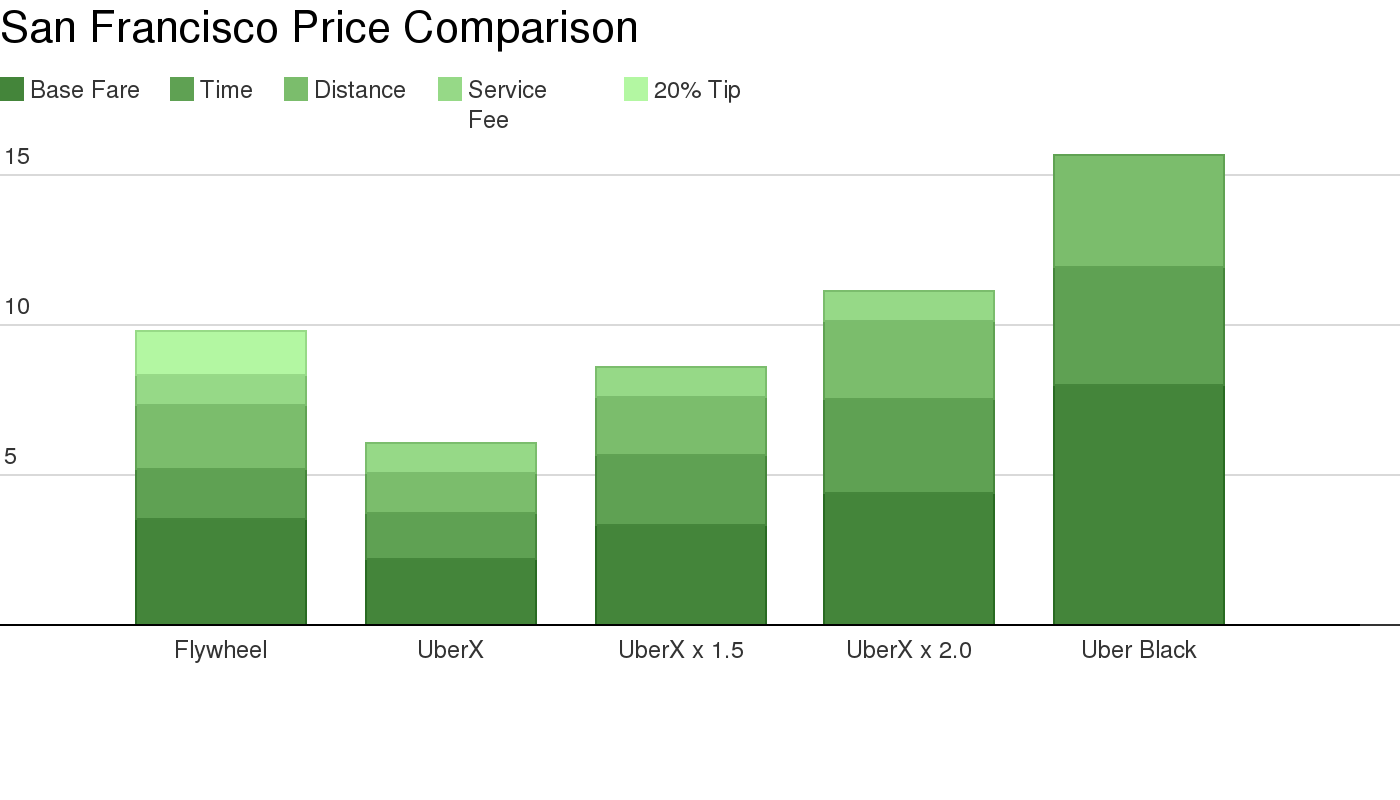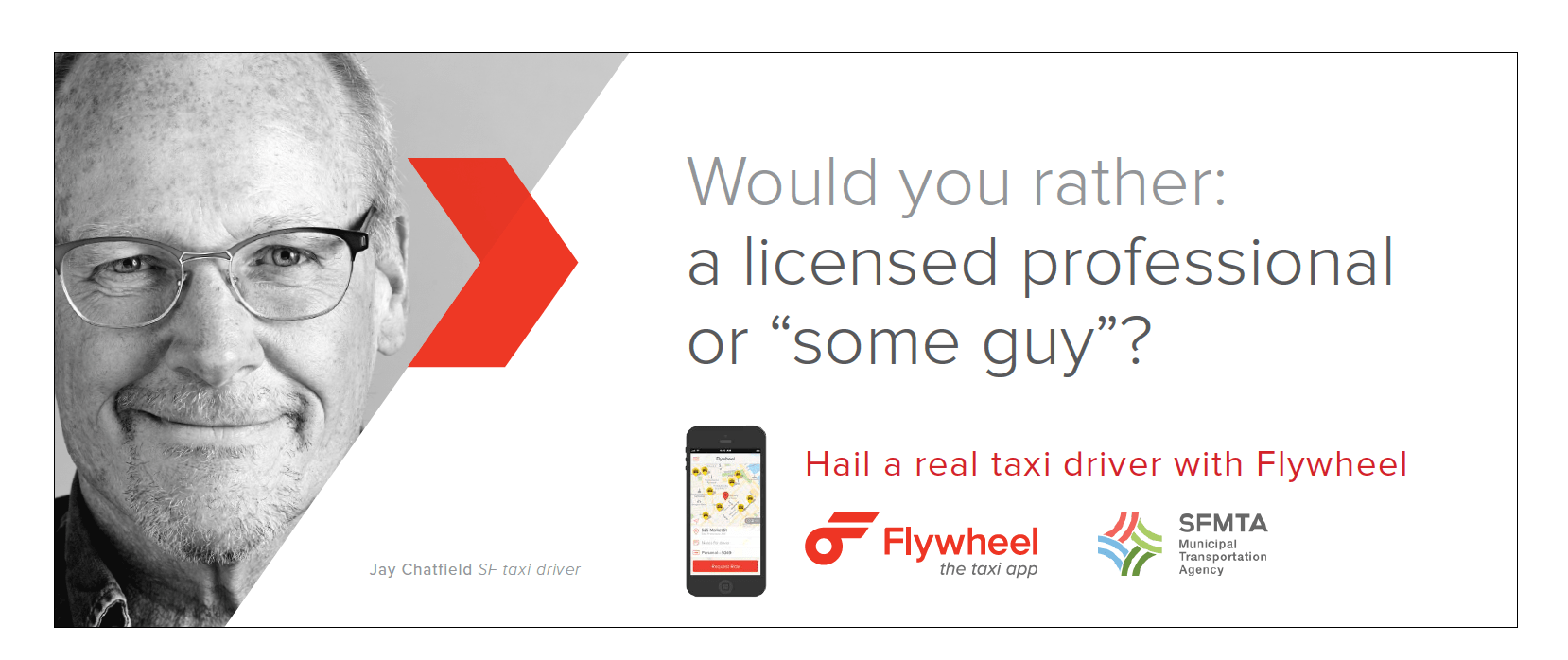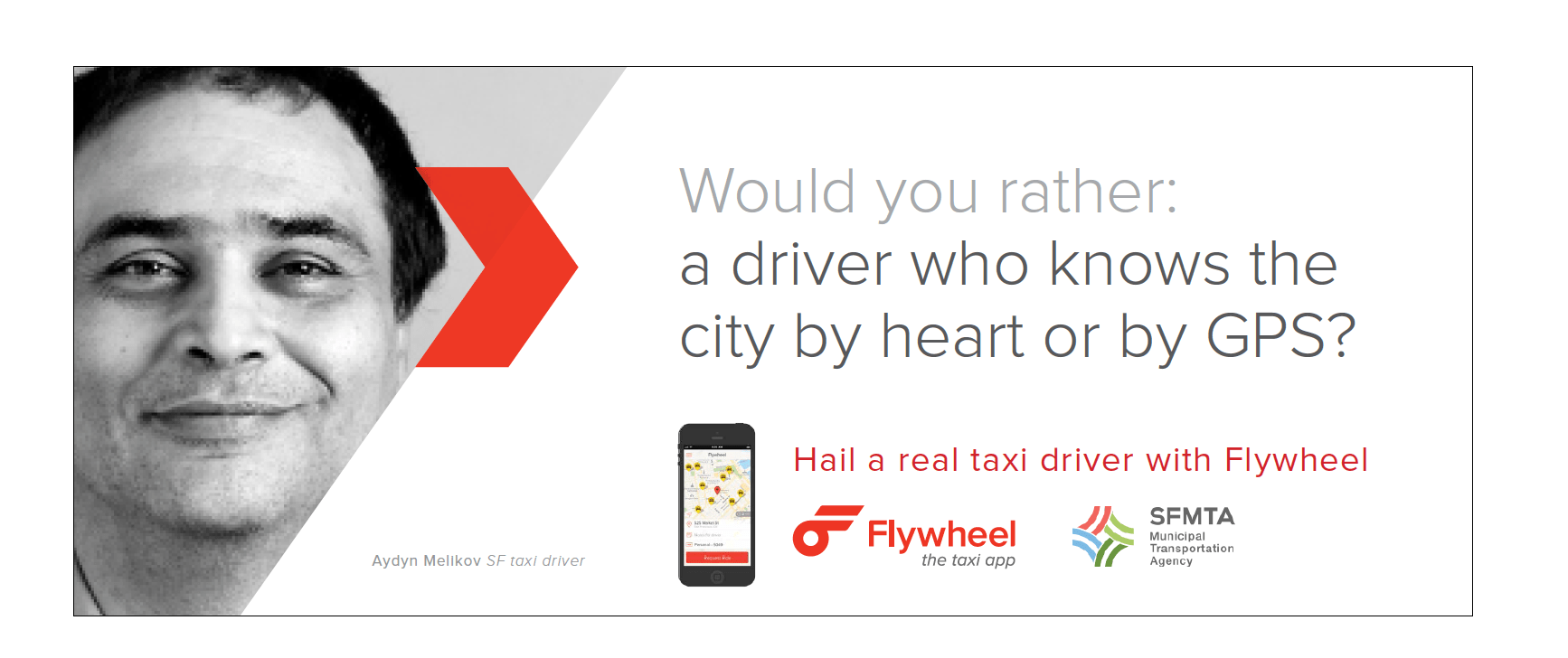
For people who live in cities like San Francisco and New York, this era of on-demand transportation wars can be a fantastic time to take a regular old cab. That’s especially true because of apps like Flywheel and Arro—the latter launching in New York City on Wednesday—which allow riders to summon taxis from their smartphones and pay through the app just like they do when taking an Uber or Lyft.
Here are five reasons you should download a taxi-hailing app in addition to Uber or Lyft if you can:
There’s no surge pricing
Uber is fond of pointing out that its UberX service is cheaper than a cab. And that goes doubly for its UberPOOL option, which allows riders to get cheaper fares for sharing rides with strangers traveling in the same general direction. A trip from downtown San Francisco to the airport could be half the price via UberPOOL compared to what it is in a cab, saving a rider a solid $25.
But surge pricing, Uber’s practice of temporarily upping rates in times of high demand or low supply, requires a big asterisk on the company’s cheaper-than-thou talk. Right after work or on those late weekend nights, the rates for an UberX driver can quickly double or triple. And that probably means that taking a never-surging cab is now the cheapest option, even with a 20% tip factored in.
The below chart shows sample rates for a hypothetical trip (based on a recent one I took), which lasts six minutes, covers one mile and involves three minutes of idle time sitting in San Francisco traffic:

The size of these bars will vary from city to city and company to company, but cabs remain competitively priced. And apps that summon them are worth having in one’s tool belt, if only so your wallet is not beholden to how many Uber drivers decided to go to work that day.
Customer service is (at least in some cases) getting better
If cab drivers in the Bay Area are any indication, these workers have never been more grateful for a fare. Taxis became notorious for providing terrible service in part because they could get away with it in times of yore. Riders had nowhere else to turn. But the competition from Lyft and Uber drivers—with their polite salutations and Starburst candy and free bottles of water—has shamed many taxi drivers into upping their customer-service game. Taxis in San Francisco are lousy with “How are you?”’s and “Which route would you prefer?”’s and “Have a wonderful night”’s.
Apps like Flywheel also inspire better service because taxi drivers are held accountable through a five-star rating system, just like they are in the Uber and Lyft apps. Bad ratings get investigated. Bad drivers get suspended. Apps allow for feedback and customer input.
“Because the idea of passenger and driver ratings is a new concept for taxis we will work with drivers before we kick them off the platform entirely,” says Flywheel spokesman Bob Patterson. “This could be a conversation with them or retraining.”
Either way, they’re likely to listen. Access to this much-needed lifeline in the Age of Uber isn’t something many are willing to risk.
Waiting times can be shorter
Polls have found that young people are more supportive of and familiar with Uber. At those times when this heavy-using demographic is likely to be summoning cars—like after partying on a Friday night or heading to work in the morning—cabs can be relatively easy to come by. In San Francisco, it’s not uncommon to open an Uber app and find that the closest available driver is seven minutes away at a peak time, while the closest cab is just two minutes off.
The hegemony and popularity of Uber is so great in the Bay Area that many young people aren’t even aware that Flywheel exists, even though it’s in more than 80% of the city’s cabs and has been live for more than two years. At the most recent Crunchies (a sort of Oscars celebration for startups) the first joke to fall flat from actor T.J. Miller was about the relatively unpopular and buggy ride-hailing app Curb, which began as a taxi-hailing app. He took a jab at them and was greeted with silence. Few in the highly attuned room—who had all strolled past anti-Uber protestors outside—seemed to be aware that such a thing existed. For now at least, that means more supply for the rest of us.
Cabs often have special access
Until July, it was illegal for Uber or Lyft to pick up passengers at Los Angeles’ LAX airport. When city officials voted to change that, Los Angeles became the largest U.S. city allowing full airport access for such companies. Yet even then, officials estmated that it would take months for those drivers to comply with all the rules about processes and fees that these highly regulated depots have in place. The month before, New York City seized nearly 500 Uber cars because drivers were taking illegal pickups, like disallowed street-hails and rides from JFK airport.
Though rules will likely change as these growing companies continue to lobby airport and city commissioners, for now cabs can get preferential treatment in big cities—whether that’s the ability to work airplane hubs or use special lanes on city thoroughfares. Against “Uber outcry,” San Francisco decided this summer to limit private-car traffic on its main artery, Market Street, leading news outlets to predict better service was in store for taxi customers.
You know what they say about experience
Part of the reason Uber is able to lure hundreds of thousands of new drivers to its platform worldwide every month is the low barrier to entry. It’s easy to sign up, and people can work whenever they feel like it, with no previous driving experience or formal training. In a white paper put out earlier this year, Uber surveyed its drivers and found that some were students, others were retired, others were stay-at-home parents. About 20% came to the job from somewhere in transportation services. But just over half, 51%, had never previously worked as a driver.
While there is a lot to say about the employment opportunities this provides people, especially those struggling to find work, there is also something to say for the experience of taxi drivers—who are less likely to be relying on their phones for directions and more likely to know a city and its traffic patterns well. When the city of San Francisco (whose “position is that there is a public good to having a regulated taxi industry”) teamed up with Flywheel to promote the service in 2014, they plastered messages like these on the sides of buses:


Of course, any individual taxi driver could still be rude, slow and expensive compared to the next new-economy driver on the block. But now is not the time to write off taxis or to forget that they’ll be rolling by—available via app—as you stare down at your phone, waiting for your Uber.
More Must-Reads from TIME
- Cybersecurity Experts Are Sounding the Alarm on DOGE
- Meet the 2025 Women of the Year
- The Harsh Truth About Disability Inclusion
- Why Do More Young Adults Have Cancer?
- Colman Domingo Leads With Radical Love
- How to Get Better at Doing Things Alone
- Michelle Zauner Stares Down the Darkness
Contact us at letters@time.com